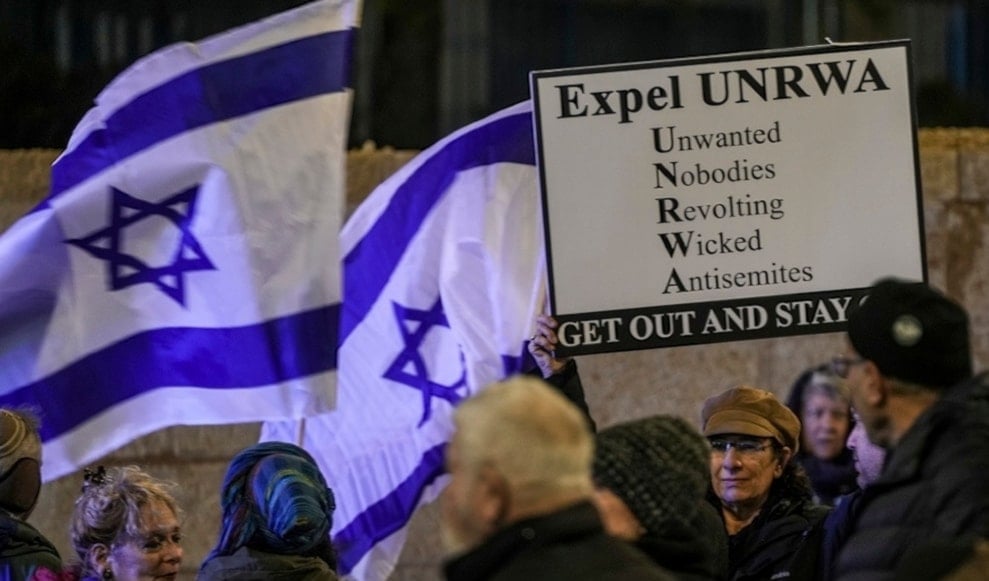'Israel' striking UNRWA schools in 'deliberate strategy': The Guardian
Israeli airstrikes on Gaza schools sheltering civilians are part of a deliberate strategy, with more schools marked for bombing, according to The Guardian.
-

Israeli settlers protest against UNRWA in occupied al-Quds, February 5, 2024. (AP)
A series of deadly airstrikes on school buildings used as civilian shelters in Gaza were part of an Israeli military strategy that has identified more schools as future targets, The Guardian has learned.
At least six schools have been struck in recent months, reportedly killing more than 120 people, in what sources familiar with the strategy described as a deliberate "loosening of controls on actions targeting Hamas operatives at sites with large numbers of civilians present," according to The Guardian.
The latest such strike took place Monday in Deir al-Balah, central Gaza, where four people were reportedly killed after the bombing of a school-turned-shelter.
The Israeli military, without providing evidence or naming the location, claimed it had targeted a site "used by terrorists" and said efforts were made to minimize civilian casualties.
Military sources told The Guardian that al-Aishiya was among a list of school buildings identified by the Israeli occupation forces as current or future targets.
Four additional school sites have been marked for potential strikes, including Halawa, al-Rafaa’i, Nusiba, and Halima Saadia, all located in or near Jabalia in northern Gaza.
It remains unclear whether these schools are currently housing displaced civilians, though two appear to have sustained previous damage during earlier stages of the Israeli aggression, The Guardian explained.
More Gaza schools listed as IOF targets amid shelter bombings
According to updated United Nations assessments, 95% of schools in Gaza have been damaged to some extent, with approximately 400 sustaining direct hits.
On 25 May, the Fahmi al-Jarjawi school was bombed, reportedly killing at least 54 people who were sleeping inside.
Local officials told the BBC that among the victims were severely burned bodies of children recovered from classrooms set ablaze by the airstrike.
The Israeli occupation forces said the target was a command center used by both Hamas and Islamic Jihad, claiming the strike neutralized “key terrorists” operating within the premises.
According to The Guardian, over the past two months, military sources revealed that the Israeli military has classified schools, hospitals, and municipal buildings as “heavy centres,” sites allegedly used by Hamas fighters operating alongside civilians.
Such claims have, however, been repeatedly refuted by Palestinian officials.
These sources told The Guardian that airstrikes have been authorized even when only low-ranking militants were present, with full awareness that civilians may be killed in the process.
Juliette Touma, communications director at UNRWA, condemned the strikes, stating that schools “must always be protected and must never be hit or used for military or fighting purposes.”
She added, “Very sadly, schools have been struck over and over for the past 20 months. It’s a grave violation of international law and of children’s rights.”
Responding to questions about the operations, an Israeli military spokesperson claimed that all IOF actions are based on military necessity and in accordance with international law, according to The Guardian.
As more Gaza school buildings fall under threat, humanitarian agencies and legal experts continue to question the proportionality and legality of these airstrikes, especially amid worsening displacement and the use of educational facilities as shelters.

 3 Min Read
3 Min Read








